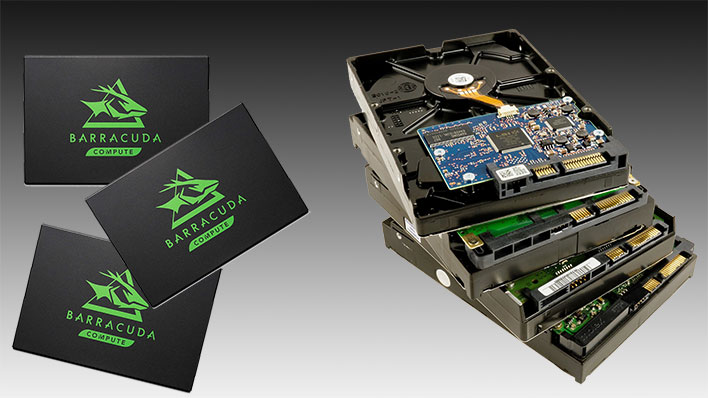SSD Failure Rates And Temps Are Compared To HDDs In Insightful Storage Report

The latest storage report from Backblaze, a cloud backup firm with oodles of data and stats to share, is live with some interesting comparisons between its crop of solid-state drives (SSDs) that have been in service since late 2018 and mechanical hard disk drives (HDDs) that have been in use for quite some time. While not a perfect comparison, this is one of the more comprehensive examinations out there comparing temps and failure rates of both types of storage mediums.
This is the second major report Blackblaze has published on its four-year-old (and change) SSDs. The first one came in September 2022, in which its SSDs showed a lower annual failure rate (AFR) compared to HDDs as they headed into five years of service—just 0.92 percent compared to 3.55 percent. This is something that will be especially interesting as time goes on, as the AFR of HDDs jumped to 5.23 percent by year six, 6.26 percent in year seven, and 6.93 percent in year eight.
In the meantime, things are looking pretty good for SSDs. By the end of 2022, Backblaze had 2,906 SSDs in operation in its storage servers, with models from Crucial, Dell, Micron, Seagate, and Western Digital. These ranged in capacity from 240GB to 2TB, with the majority being 250GB.
Out of the 13 drive models represented, seven of them had no failures. It gets a little murky because six of the models had a limited number of drive days—less than 10,000—to extrapolate statistics from and are therefore not really meaningful. However, there were some standouts.
"The Dell SSD (model: DELLBOSS VD) has zero failures for 2022 and has over 100,000 drive days for the year. The resulting AFR is excellent, but this is an M.2 SSD mounted on a PCIe card (half-length and half-height form factor) meant for server deployments, and as such it may not be generally available," Backblaze notes in its report.

Source: Backblaze
Three other drives also had over 100,000 drive days for the year. In order of the lowest to highest AFR, they include Seagate's 250GB BarraCuda 120 (ZA250CM10003) at 0.73 percent, Crucial's 250GB MX500 SSD (CT250MX500SSD1) at 1.04 percent, and another 250GB Seagate BarraCuda SSD (ZA250CM10002) at 1.98 percent.
Including drives from previous years, the overall AFR for SSDs jumped from 0.39 percent in 2020 to 1.05 percent in 2021, then dropped slightly to 0.98 percent in 2022. Note that those figures are for each year and not a cumulative total.
The overall lifetime AFR for SSDs landed at 0.89 percent by the end of 2022, compared to 1.38 percent for HDDs during the first three years of service. That also represents a somewhat surprising drop from the lifetime AFR of 1.04 percent at the end of 2021.

Source: Backblaze
Backblaze also looked at temps, which is a key concern for consumers. Higher temps can equate to reduced performance by way of throttling, so a cooler running drive is desirable. Interestingly, the average temp of Backblaze's SSDs only varied by a single degree in 2022, going from a low of 34.4C to 35.4C throughout the year.
"For 2022, the average temperature was 34.9 degrees Celsius. The average temperature of the hard drives in the same storage servers over the same period was 29.1 degrees Celsius. This difference seems to fly in the face of conventional wisdom that says SSDs run cooler than HDDs," Backblaze states.
We found this observation by Backblaze interesting as modern SSDs are known to run hot, which runs counter to the firm's statement on conventional wisdom. It's why companies put some effort into marketing SSD cooling solutions, and why there are some comically large SSD coolers on the market.
In any event, Backblaze says one reason why its SSD temps came in higher than its HDDs is because the SSDs sit further away from the cool aisle. As such, cool air hits the HDDs first before meandering over to the SSDs.
It's still relatively early in the game for Backblaze's employment of SSDs, in comparison to its crop of HDDs. As time goes on, these storage reports comparing the two mediums will become more meaningful. Until then, you can check out Backblaze's latest storage report for the most up-to-date data available.

